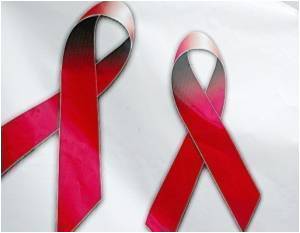International Thalassemia Day was first established by the World Health Organization (WHO) on May 8 to raise awareness and organize prevention and timely interventions.
International Thalassemia Day is a special health day marked by patient care organizations and advocacy groups globally. It is a day where all patients feel a sense of unity and oneness in their fight against Thalassemia. It is a day to celebrate the spirit of people across the world, who fight Thalassemia and its complications on a daily basis. This day is a tribute to the memories of all those who have passed on fighting this dreaded blood disorder.International Thalassemia Day is a day to advocate the cause of Thalassemia and push for further active research towards a permanent cure. It also brings together doctors, care specialists, medical researchers, pharma and drug companies to share best practices in the treatment and care of Thalassemia.
What is Thalassemia?
Thalassemia is an autosomal recessive blood disorder inherited from parental genes.This condition leads to low hemoglobin production. The most common form of Thalassemia in India is beta-Thalassemia in which the hemoglobin does not produce sufficient beta protein. There are three types of beta-Thalassemia ranging from minor, intermedia to major. Thalassemia Major or Cooley’s Anemia is the most severe form of beta-Thalassemia where the person requires life-long blood transfusions and other therapies (like iron chelation) in order to survive and prevent early death. Thalassemia is detected in children with a CBC (complete blood count) and haemoglobin electrophoresis along with genetic mapping of the family.
A person with Thalassemia Major inherits the disorder from parents both of whom are Thalassemia Minors or carriers of the Thalassemia trait. Thalassemia Minors are healthy and do not require blood transfusions. There are approximately 240 million carriers of beta-Thalassemia globally. In India, there are 30 million carriers with 12,000 infants born each year with a severe form of beta-Thalassemia.
Why International Thalassemia Day?
International Thalassemia Day is marked to show solidarity and support to all people with Thalassemia, their caregivers, their families and healthcare providers.It is a day to express concern and empathy for all children and adults with Thalassemia and raise public awareness about prevention through parental screening and pre-natal testing. This day is also about dissemination of information about newer treatment and drug therapies for people with Thalassemia. Many of the Thalassemia patient groups globally and in India organize conferences, walkathons, free lab tests and other diagnostics and awareness camps for patients and families.
Some of the key objectives of International Thalassemia Day include:
- Sensitizing communities and raising public awareness on Thalassemia
- Prevention and spread of Thalassemia
- Information dissemination of best care practices and management for patient communities and caregiver communities
- Knowledge enhancement and transfer of expert knowledge among the medical communities
- Encourage blood donation drives in communities
- Career guidance and employment programs for people with Thalassemia
- Psychosocial support through community awareness
- Thalassemia eradication programs
International Thalassemia Day 2015 Theme
Every year, the Thalassemia International Federation (TIF) sets a different theme for this special day.This year, TIF’s theme is “Enhancing partnership towards patient-centred health systems: good health adds life to years!” The theme reflects the shift in dynamics from medical- and doctor-centred health systems to patient-driven systems. Good practices in Thalassemia care and treatment are possible only with the cooperation and partnership of patients and healthcare providers. Doctors, nurses, caregivers and patients need to work together to ensure stability and good health without complications. Since the complications from Thalassemia (mostly due to iron overload) range from endocrine and reproductive issues to cardiac and liver issues, a team of healthcare professionals is necessary to manage patients. This year’s theme is apt in focusing on the idea of “partnership” where everyone works for the benefit of the individual patient.
This year’s theme also significantly focuses on good health adding life to years. Thalassemia care and treatment includes timely blood transfusions and continuous chelation along with regular lab and diagnostic tests. Keeping up with regular treatment ensures stable health, which can greatly enhance quality of life and increase life expectancy.









